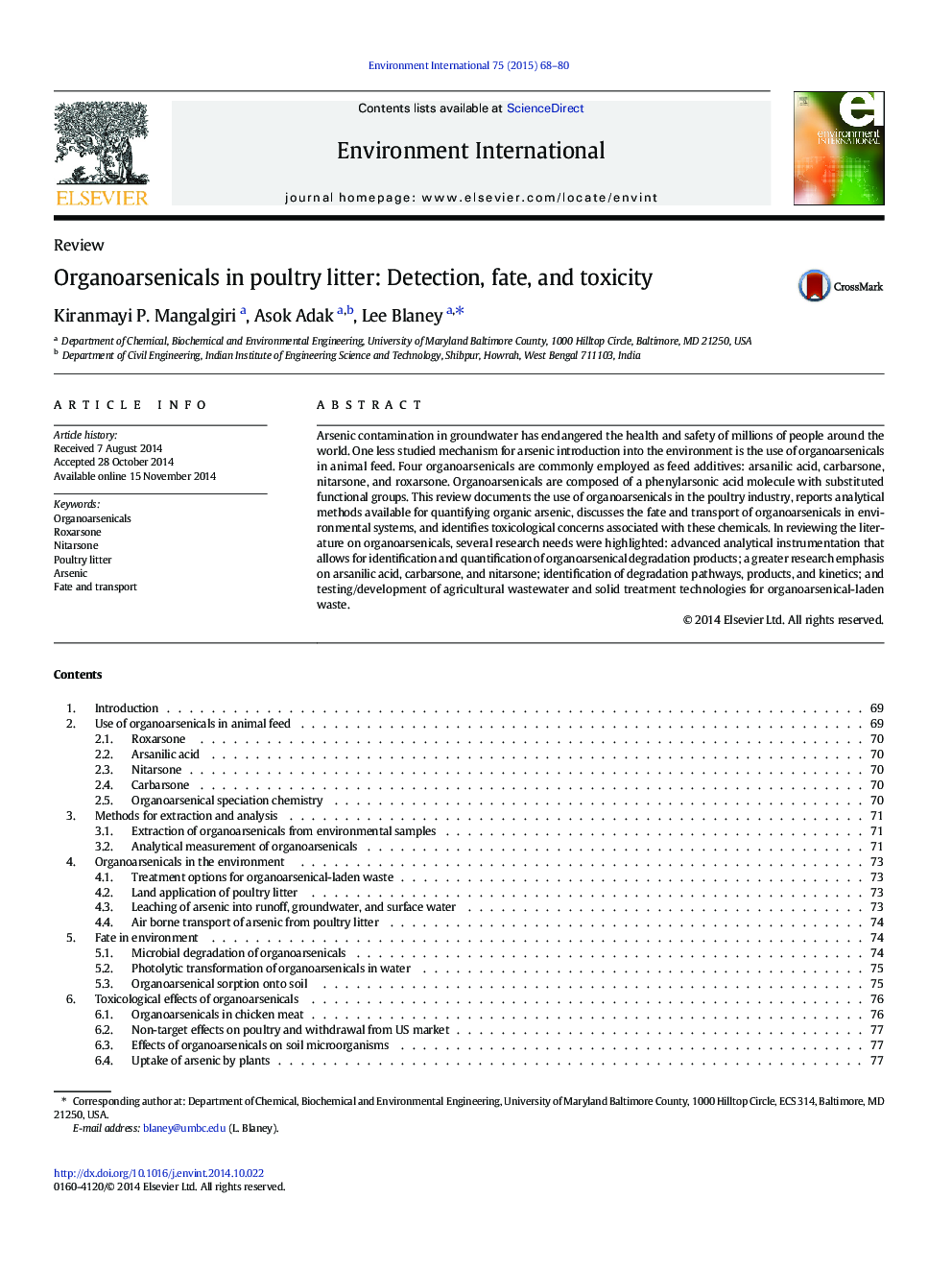| کد مقاله | کد نشریه | سال انتشار | مقاله انگلیسی | نسخه تمام متن |
|---|---|---|---|---|
| 4422694 | 1619053 | 2015 | 13 صفحه PDF | دانلود رایگان |

• Organoarsenicals are emerging contaminants used in animal feeding operations.
• Land application of poultry manure introduces arsenic into the environment.
• Advanced analytical methods are needed to measure organoarsenical speciation.
• Transformation of organoarsenicals into inorganic arsenic is poorly understood.
• Technologies available for organoarsenical treatment are limited.
Arsenic contamination in groundwater has endangered the health and safety of millions of people around the world. One less studied mechanism for arsenic introduction into the environment is the use of organoarsenicals in animal feed. Four organoarsenicals are commonly employed as feed additives: arsanilic acid, carbarsone, nitarsone, and roxarsone. Organoarsenicals are composed of a phenylarsonic acid molecule with substituted functional groups. This review documents the use of organoarsenicals in the poultry industry, reports analytical methods available for quantifying organic arsenic, discusses the fate and transport of organoarsenicals in environmental systems, and identifies toxicological concerns associated with these chemicals. In reviewing the literature on organoarsenicals, several research needs were highlighted: advanced analytical instrumentation that allows for identification and quantification of organoarsenical degradation products; a greater research emphasis on arsanilic acid, carbarsone, and nitarsone; identification of degradation pathways, products, and kinetics; and testing/development of agricultural wastewater and solid treatment technologies for organoarsenical-laden waste.
Figure optionsDownload as PowerPoint slide
Journal: Environment International - Volume 75, February 2015, Pages 68–80